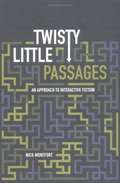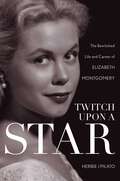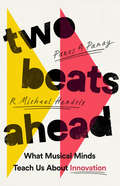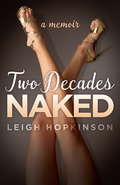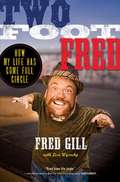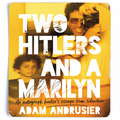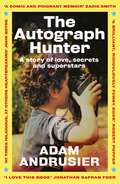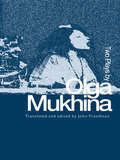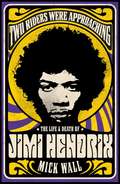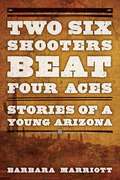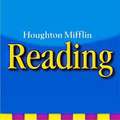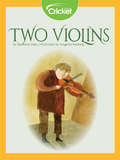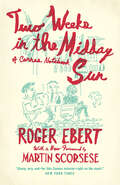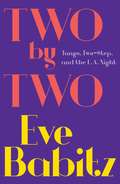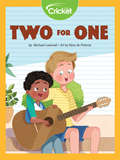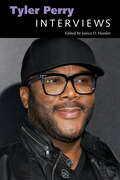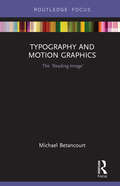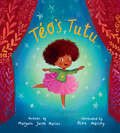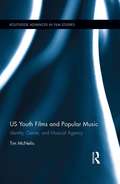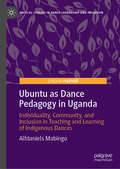- Table View
- List View
Twisty Little Passages: An Approach to Interactive Fiction
by Nick MontfortFrom the Book Jacket: Interactive fiction-the best-known form of which is the text game or text adventure-has not received as much critical attention as have such other forms of electronic literature as hypertext fiction and the conversational programs known as chatterbots. Twisty Little Passages (the title refers to a maze in Adventure, the first interactive fiction) is the first book-length consideration of this form, examining it from gaming and literary perspectives. Nick Montfort, an interactive fiction author himself, offers both aficionados and first-time users a way to approach interactive fiction that will lead to a more pleasurable and meaningful experience of it. Twisty Little Passages looks at interactive fiction beginning with its most important literary ancestor, the riddle. Montfort then discusses Adventure and its precursors (including the I Ching and Dungeons and Dragons), and follows this with an examination of mainframe text games developed in response, focusing on the most influential work of that era, Zork. He then considers the introduction of commercial interactive fiction for home computers, particularly that produced by Infocom. Commercial works inspired an.independent reaction, and Montfort describes the emergence of independent creators and the development of an online interactive fiction community in the 1990s. Finally, he considers the influence of interactive fiction on other literary and gaming forms. With Twisty Little Passages. Nick Montfort places interactive fiction in its computational and literary contexts, opening up-this-still-developing form to new consideration.
Twitch Upon a Star: The Bewitched Life and Career of Elizabeth Montgomery
by Herbie J PilatoBased on author Herbie J Pilato&’s exclusive interviews with Elizabeth Montgomery prior to her death in 1995, Twitch Upon a Star includes insider material and commentary from several individuals associated with her remarkable life and career before, during, and after Bewitched, including her classic feature films The Court Martial of Billy Mitchell (1955), Who's Been Sleeping In My Bed? (1963), and Johnny Cool (1963). Two of Montgomery&’s many popular TV movies, A Case of Rape (which remains one of the highest-rated TV-movies of all time) and The Legend of Lizzie Borden (which will soon be remade as a feature film), were groundbreaking and remain classics. But Twitch Upon a Star also goes behind the scenes to explore Montgomery&’s political activism, including her early advocacy for AIDS sufferers and the peace movement; her support for all minorities, including the gay community and the disabled; and her controversial participation as narrator of the1988 feature film documentary Cover-Up and its 1991 Oscar-winning sequel, The Panama Deception (both of which chronicled the Iran/Contra scandal of the 1980s). The book also explores Montgomery's tumultuous relationships with her father, screen legend Robert Montgomery (she was a liberal; he was a staunch conservative), and her four husbands (including actor Gig Young, who later died in a murder/suicide). Through it all—and to family and friends such as fellow performers Ronny Cox, Sally Kemp, and Florence Henderson—she was just Lizzie: down-to-earth and unaffected, just like Samantha, the "witch-with-a-twitch" Stephens, her most famous role.
Two Beats Ahead: What Musical Minds Teach Us About Innovation
by Panos A. Panay R. Michael HendrixDiscover what the musical mind has to teach us about innovation in this fascinating book, featuring interviews with Justin Timberlake, Pharrell Williams, T Bone Burnett, Gloria Estefan, Imogen Heap, and many more. Musicians may just hold the keys to innovation in business. They don&’t think like we do, and in the creative process, they don&’t act like we do. It&’s no coincidence that some of the world&’s most respected creators are also entrepreneurs. In Two Beats Ahead, Panos A. Panay, senior vice president for strategy at Berklee College of Music, and R. Michael Hendrix, global design director at IDEO, interview some of the nation&’s top musicians and business leaders about how they approach innovation differently. They speak with hit maker Desmond Child about the importance of demoing and with industry legend Jimmy Iovine about listening and knowing your audience. Readers will learn the secrets of collaboration from Beyoncé and Pharrell Williams, about &“daring to suck&” from Justin Timberlake, about the power of reinvention from Gloria Estefan, and the importance of experimentation from Imogen Heap and Radiohead. And they&’ll learn the value of finding and producing talent with T Bone Burnett and Hank Shocklee, cofounder of Public Enemy. A window into these brilliant mindsets, this book equips any entrepreneur or innovative thinker with tools they can put into practice to thrive in an evolving world.
Two Decades Naked: A true story of dancing, dreams and desire
by Leigh HopkinsonFor fans of Hooked by Samantha X and In My Skin by Kate Holden. Leigh Hopkinson was the least likely person to become a stripper but after spending two decades naked, she realised it was her career - and her life.When Leigh Hopkinson was a university student in Christchurch she worked at a succession of low-paying jobs that paid the rent and fit in around her degree. None of them fit so well, however, as stripping. She figured it couldn't be that difficult - she was just going to dance on stage in front of a bunch of strangers. She'd show them a bit of skin, but the gig wasn't going to last that long. Or so she imagined.While stripping was harder than Leigh thought it would be, she hadn't counted on it being so exhilarating - or lucrative. So when she moved to Melbourne and needed to make a living, the lure of her old job was strong. The world of the strip club had become familiar, even reassuring, though some of the people she met during the course of her job didn't exactly give her faith in the future of humanity.Over the course of Leigh's career, she learnt a lot about other people and even more about herself, and the result is a story that delves into a world that not everyone visits but everyone finds fascinating.
Two Foot Fred
by Lisa Wysocky Fred GillCountry music celebrity Two Foot Fred shares his story of living with dwarfism, overcoming odds, and finding peace and success with a positive attitude. Despite his physical limitations from birth--a form of dwarfism known as diastrophic dysplasia, a cleft palate, clubfeet, and scoliosis--Fred Gill rose above his circumstances to graduate college and open his first restaurant by the young age of twenty-two. In 1998, Fred took what proved to be a life-changing trip to Nashville during the city's annual country music celebration, where he met John Rich. That fateful meeting led to a regular job as Ambassador of Attractions for the band Big & Rich, as well as to numerous country music award shows and other television programs. But while his successes are many, Fred has had more than his share of challenges, including "a quarter-life crisis" and troubles with depression, alcohol, and gambling. Like many other celebrities, Fred worked to find peace, turning to his small-town upbringing for solace and affirmation. Two Foot Fred shows that nothing can defeat you unless you allow it to, and that our lives are simply what we make of them.
Two Foot Fred: How My Life Has Come Full Circle
by Lisa Wysocky Fred GillCountry music celebrity Two Foot Fred shares his story of living with dwarfism, overcoming odds, and finding peace and success with a positive attitude. Despite his physical limitations from birth--a form of dwarfism known as diastrophic dysplasia, a cleft palate, clubfeet, and scoliosis--Fred Gill rose above his circumstances to graduate college and open his first restaurant by the young age of twenty-two. In 1998, Fred took what proved to be a life-changing trip to Nashville during the city's annual country music celebration, where he met John Rich. That fateful meeting led to a regular job as Ambassador of Attractions for the band Big & Rich, as well as to numerous country music award shows and other television programs. But while his successes are many, Fred has had more than his share of challenges, including "a quarter-life crisis" and troubles with depression, alcohol, and gambling. Like many other celebrities, Fred worked to find peace, turning to his small-town upbringing for solace and affirmation. Two Foot Fred shows that nothing can defeat you unless you allow it to, and that our lives are simply what we make of them.
Two Hitlers and a Marilyn: An autograph hunter's escape from suburbia
by Adam Andrusier"I'd managed to puncture a hole between our universe and the parallel one where all the celebrities lived."'The zaniest book I've read in eons. Andrusier is a fresh new voice and more importantly he's funny as hell.'GARY SHTEYNGARTAdam Andrusier spent his childhood in pursuit of autographs. After writing to every famous person he could think of, from Frank Sinatra to Colonel Gaddafi, he soon jostled with the paparazzi at stage doors and came face-to-face with the most famous people on the planet.For young Adam, autographs were a backstage pass to a world beyond his chaotic family home in Pinner, and his Holocaust-obsessed father. They provided a special connection to a world of glamour and significance lying just beyond his reach.But as Adam turned from collector to dealer, learning how to spot a fake from the real deal, he discovered that in life, as in autographs, not everything is as it first appears. When your obsession is a search for the authentic, what happens when you discover fraudulence in your own family?Two Hitlers and a Marilyn is a hilarious and moving account of discovering that idols are mortals. It's a story of growing up, forgiveness and discovering a place in the world.'I love this book. It is wise, funny, surprising, touching, and wonderful company.'JONATHAN SAFRAN FOER(P)2021 Headline Publishing Group Limited
Two Hitlers and a Marilyn: An autograph hunter's escape from suburbia
by Adam Andrusier"I'd managed to puncture a hole between our universe and the parallel one where all the celebrities lived."'The zaniest book I've read in eons. Andrusier is a fresh new voice and more importantly he's funny as hell.' GARY SHTEYNGART Adam Andrusier spent his childhood in pursuit of autographs. After writing to every famous person he could think of, from Frank Sinatra to Colonel Gaddafi, he soon jostled with the paparazzi at stage doors and came face-to-face with the most famous people on the planet. For young Adam, autographs were a backstage pass to a world beyond his chaotic family home in Pinner, and his Holocaust-obsessed father. They provided a special connection to a world of glamour and significance lying just beyond his reach. But as Adam turned from collector to dealer, learning how to spot a fake from the real deal, he discovered that in life, as in autographs, not everything is as it first appears. When your obsession is a search for the authentic, what happens when you discover fraudulence in your own family? Two Hitlers and a Marilyn is a hilarious and moving account of discovering that idols are mortals. It's a story of growing up, forgiveness and discovering a place in the world.'I love this book. It is wise, funny, surprising, touching, and wonderful company.' JONATHAN SAFRAN FOER
Two Plays by Olga Mukhina (Russian Theatre Archive Ser. #Vol. 18)
by John FreedmanOlga Mukhina is one of the most talented, young playwrights in Russia. Born in Moscow in 1970, she has already garnered enviable praise from critics and audiences throughout Russia and Europe since her first play, Tanya-Tanya, was performed in 1996. Tanya-Tanya is an atmospheric, poetic tale that observes three couples at a suburban Moscow home who dance, drink champagne, kiss, fall in and out of love, and struggle with dignity and humor to keep some semblance of control over their lives. The parallels with Chekhovian drama are undeniable and clearly intended by the author. You, Mukhina's most recent work, is a love poem to her hometown of Moscow as well as a scathing attack on the apathy of people blindly wrapped up in their own happiness and sorrow.
Two Riders Were Approaching: The Life & Death of Jimi Hendrix
by Mick WallJimmy was a down-at-heel guitarist in New York, relying on his latest lovers to support him while he tried to emulate his hero Bob Dylan. A black guy playing white rock music, he wanted to be all things to all people.But when Jimmy arrived in England and became Jimi, the cream of swinging London fell under his spell. It wasn't that Jimi could play with his teeth, play with his guitar behind his back. It was that he could really play.Journeying through the purple haze of idealism and paranoia of the sixties, Jimi Hendrix was the man who made Eric Clapton consider quitting, to whom Bob Dylan deferred on his own song 'All Along the Watchtower', who forced Miles Davis to reconsider his buttoned-down ways - and whose 'Star Spangled Banner' defined Woodstock. And when his star, which had burned so brightly, was extinguished far too young, his legend lived on in the music - and the intrigue surrounding his death. Eschewing the traditional rock-biography format, Two Riders Were Approaching is a fittingly psychedelic and kaleidoscopic exploration of the life and death of Jimi Hendrix - and a journey into the dark heart of the sixties. While the groupies lined up, the drugs got increasingly heavy and the dream of the sixties burned in the fire and blood of the Vietnam War, the assassination of Martin Luther King and the election of President Richard Nixon. Acclaimed writer Mick Wall, author of When Giants Walked the Earth, has drawn upon his own interviews and extensive research to produce an inimitable, novelistic telling of this tale - the definitive portrait of the Guitar God at whose altar other guitar gods worship.Jimi Hendrix's is a story that has been told many times before - but never quite like this.
Two Riders Were Approaching: The Life & Death of Jimi Hendrix
by Mick WallJimmy was a down-at-heel guitarist in New York, relying on his latest lovers to support him while he tried to emulate his hero Bob Dylan. A black guy playing white rock music, he wanted to be all things to all people.But when Jimmy arrived in England and became Jimi, the cream of swinging London fell under his spell. It wasn't that Jimi could play with his teeth, play with his guitar behind his back. It was that he could really play.Journeying through the purple haze of idealism and paranoia of the sixties, Jimi Hendrix was the man who made Eric Clapton consider quitting, to whom Bob Dylan deferred on his own song 'All Along the Watchtower', who forced Miles Davis to reconsider his buttoned-down ways - and whose 'Star Spangled Banner' defined Woodstock. And when his star, which had burned so brightly, was extinguished far too young, his legend lived on in the music - and the intrigue surrounding his death. Eschewing the traditional rock-biography format, Two Riders Were Approaching is a fittingly psychedelic and kaleidoscopic exploration of the life and death of Jimi Hendrix - and a journey into the dark heart of the sixties. While the groupies lined up, the drugs got increasingly heavy and the dream of the sixties burned in the fire and blood of the Vietnam War, the assassination of Martin Luther King and the election of President Richard Nixon. Acclaimed writer Mick Wall, author of When Giants Walked the Earth, has drawn upon his own interviews and extensive research to produce an inimitable, novelistic telling of this tale - the definitive portrait of the Guitar God at whose altar other guitar gods worship.Jimi Hendrix's is a story that has been told many times before - but never quite like this.
Two Six Shooters Beat Four Aces: Stories of a Young Arizona
by Barbara Marriott Ph.DTaken from the interviews conducted by the Works Progress Administration (WPA) in Arizona during the Great Depression,this regional history offers more than facts, figures, and stilted portraits of &“important history.&” This glimpse into the lives of regional lifestyles—particularly in the relatively young state of Arizona—portrays history from the perspective of those who lived it. Gathered into chapters on outlaws and lawmen, miners and prospectors, cowboys, shepherds, and those who came to the state for its mineral wealth, the descriptions offered by the Arizona pioneers in these interviews become a powerful tapestry of adventure and men&’s dreams.
Two Times Intro: On The Road With Patti Smith
by Michael Stipe"In Stipe’s startling photographs and 12 brief written homages, Patti Smith is depicted as a down-to-earth goddess, a part of and apart from her evolving entourage of musicians, artists, poets (Allen Ginsberg makes an appearance), and friends. This isn’t a traditional book of portraits . . . The overwhelming mood is one of disjunction, claustrophobia, exhaustion, temporariness--and the effect is raw and intimate . . . And [Stipe] is no longer the "dork nerd" teenager, but a fellow musician -- and from his proud, caring mien, even a protector."--Publishers Weekly"An energetic and gracious tribute to not only a great artist, but also to a powerful moment in her oeuvre -- and to those who contributed to it and shared in it."--New York Journal of Books"Stipe's personal friendship lends something greater to the overall vision of this book. It isn't simply a set of snapshots of performances, rather a collection of rare moments. The personal nature of the anthology makes it all the more enticing and enjoyable. Smith, in all her glory and awe-inspiring talent, is portrayed in the truest light."--Verbicide Magazine"A fascinating book . . . including appearances by Allen Ginsberg, Gregory Corso, Tom Verlaine, the members of Sonic Youth and more . . . and the short text tributes to Smith by these people, scattered throughout the manuscript, are well worth your time."--Chicago Center for Literature and PhotographyThis book comprises Michael Stipe's intimate and evocative photos of Patti Smith on tour in 1995, along with other cultural celebrities who appeared with her, such as Allen Ginsberg. In addition to text by Stipe, William Burroughs, and Patti Smith, there is also commentary from Thurston Moore, Kim Gordon, Lenny Kaye, Tom Verlaine, and more.Michael Stipe is a singer, photographer, film producer, and activist. He lives in Athens, GA, and New York, NY. R.E.M. formed in 1980 in Athens, GA, and is composed of Peter Buck, Mike Mills, and Michael Stipe. Heralded by Rolling Stone as "America's Best Rock and Roll Band," R.E.M. rose from cult college radio status to sell more than seventy million albums worldwide and was inducted into the Rock and Roll Hall of Fame in 2007.
Two Traditions of Dance (Houghton Mifflin Harcourt Vocabulary Readers #Leveled Reader: Level: 5, Theme: 4.3)
by Stanford MakishiAn introduction to different forms of dance.
Two Violins
by Darienne OaksMoshe is a frightened young boy when he and his family must flee their hometown from the Nazis. He risks starvation to find his way into the home of a Good Samaritan. Afraid he has lost his family in the Holocaust, Moshe carries on in the only way he knows how: by playing his violin.
Two Weeks in the Midday Sun: A Cannes Notebook
by Roger EbertA paragon of cinema criticism for decades, Roger Ebert—with his humor, sagacity, and no-nonsense thumb—achieved a renown unlikely ever to be equaled. His tireless commentary has been greatly missed since his death, but, thankfully, in addition to his mountains of daily reviews, Ebert also left behind a legacy of lyrical long-form writing. And with Two Weeks in the Midday Sun, we get a glimpse not only into Ebert the man, but also behind the scenes of one of the most glamorous and peculiar of cinematic rituals: the Cannes Film Festival. More about people than movies, this book is an intimate, quirky, and witty account of the parade of personalities attending the 1987 festival—Ebert’s twelfth, and the fortieth anniversary of the event. A wonderful raconteur with an excellent sense of pacing, Ebert presents lighthearted ruminations on his daily routine and computer troubles alongside more serious reflection on directors such as Fellini and Coppola, screenwriters like Charles Bukowski, actors such as Isabella Rossellini and John Malkovich, the very American press agent and social maverick Billy “Silver Dollar” Baxter, and the stylishly plunging necklines of yore. He also comments on the trajectory of the festival itself and the “enormous happiness” of sitting, anonymous and quiet, in an ordinary French café. And, of course, he talks movies. Illustrated with Ebert’s charming sketches of the festival and featuring both a new foreword by Martin Scorsese and a new postscript by Ebert about an eventful 1997 dinner with Scorsese at Cannes, Two Weeks in the Midday Sun is a small treasure, a window onto the mind of this connoisseur of criticism and satire, a man always so funny, so un-phony, so completely, unabashedly himself.
Two by Two: Tango, Two-Step, and the L.A. Night
by Eve BabitzA Simon & Schuster eBook. Simon & Schuster has a great book for every reader.
Two for One
by Michael LeannahPetey has been practicing playing his guitar for the school talent show. He plans to perform a song he wrote himself. One day he hurts his arm and has to wear a cast. How can he play guitar now? A good friend shows him how.
Tyler Perry: Interviews (Conversations with Filmmakers Series)
by Janice D. HamletA career-spanning volume, Tyler Perry: Interviews collects sixteen interviews, ranging from the early 2000s to 2018. Once a destitute and struggling playwright, Tyler Perry (b. 1969) is now a multimedia phenomenon and one of the most lucrative auteurs in Hollywood. Known for his unwavering and audacious rhetorical style, Perry has produced an impressive body of work by rejecting Hollywood’s procedures and following his personal template. Featuring mostly African American actors and centering primarily on women, Perry’s films lace drama and comedy with Christianity. Despite the skepticism of Hollywood executives who claimed that church-going black people do not go to the movies, Perry achieved critical success with the release of his first film, Diary of a Mad Black Woman, which became the US’s highest-grossing movie of 2005. With his movies, Perry has discovered an untapped audience for the stories he has to offer—stories about adversity, faith, family, and redemption. Critics, including African American filmmaker Spike Lee, have censured Perry’s work for being repetitive and reinforcing negative stereotypes that have long plagued the African American community. Supporters, however, praise Perry for creating films that allow his audience to see themselves onscreen. Regardless of how his films are received, Perry’s accomplishments—establishing the Tyler Perry brand, building one of the largest movie studios in the country, employing more African Americans in front of and behind the camera than any other studio, and creating cinematic content for audiences other filmmakers have ignored—undeniably establish him as one of the most powerful multimedia moguls in the country.
Typeset in the Future: Typography and Design in Science Fiction Movies
by Dave AddeyA designer’s deep dive into seven science fiction films, filled with “gloriously esoteric nerdery [and] observations as witty as they are keen” (Wired).In Typeset in the Future, blogger and designer Dave Addey invites sci-fi movie fans on a journey through seven genre-defining classics, discovering how they create compelling visions of the future through typography and design. The book delves deep into 2001: A Space Odyssey, Star Trek: The Motion Picture, Alien, Blade Runner, Total Recall, WALL·E, and Moon, studying the design tricks and inspirations that make each film transcend mere celluloid and become a believable reality. These studies are illustrated by film stills, concept art, type specimens, and ephemera, plus original interviews with Mike Okuda (Star Trek), Paul Verhoeven (Total Recall), and Ralph Eggleston and Craig Foster (Pixar). Typeset in the Future is an obsessively geeky study of how classic sci-fi movies draw us in to their imagined worlds.
Typography and Motion Graphics: The 'reading-image' (Routledge Studies In Media Theory And Practice Ser.)
by Michael BetancourtIn his latest book, Michael Betancourt explores the nature and role of typography in motion graphics as a way to consider its distinction from static design, using the concept of the ‘reading-image’ to model the ways that motion typography dramatizes the process of reading and audience recognition of language on-screen. Using both classic and contemporary title sequences—including The Man With the Golden Arm (1955), Alien (1979), Flubber (1998), Six Feet Under (2001), The Number 23 (2007) and Scott Pilgrim vs. The World (2010)—Betancourt develops an argument about what distinguishes motion graphics from graphic design. Moving beyond title sequences, Betancourt also analyzes moving or kinetic typography in logo designs, commercials, film trailers, and information graphics, offering a striking theoretical model for understanding typography in media.
Téo's Tutu
by Maryann Jacob MaciasThis story of a boy's first ballet recital celebrates gender-creativity, the joy of dance, and being yourselfTéo loves to dance, whether it's the cumbia with Papí, the bhangra with Amma, or ballet class with Miss Lila. He also loves the way his tutu makes him feel, inside and out. But when it comes time to decide which outfit to wear in the big dance recital--a sparkly tutu or shimmering silver pants--Téo wonders if being his most authentic self on stage will put him too much in the spotlight.
UK and Irish Television Comedy: Representations of Region, Nation, and Identity (Palgrave Studies in Comedy)
by Jill Marshall Mary IrwinThis book looks at television comedy, drawn from across the UK and Ireland, and ranging chronologically from the 1980s to the 2020s. It explores depictions of distinctive geographical, historical and cultural communities presented from the insiders’ perspective, simultaneously interrogating the particularity of the lived experience of time, and place, embedded within the wide variety of depictions of contrasting lives, experiences and sensibilities, which the collected individual chapters offer. Comedies considered include Victoria Wood’s work on ‘the north’, Ireland’s Father Ted and Derry Girls, Michaela Coel’s east London set Chewing Gum, and Wales’ Gavin and Stacey. There are chapters on Scottish sketch and animation comedy, and on series set in the Midlands, the North East, the South West and London’s home counties. The book offers thoughtful reflection on funny and engaging representations of the diverse, fragmented complexity of UK and Irish identity explored through the intersections of class, ethnicity and gender.
US Youth Films and Popular Music: Identity, Genre, and Musical Agency (Routledge Advances in Film Studies)
by Tim McNelisThis book brings theory from popular music studies to an examination of identity and agency in youth films while building on, and complementing, film studies literature concerned with genre, identity, and representation. McNelis includes case studies of Hollywood and independent US youth films that have had commercial and/or critical success to illustrate how films draw on specific discourses surrounding popular music genres to convey ideas about gender, race, ethnicity, sexuality, and other aspects of identity. He develops the concept of ‘musical agency’, a term he uses to discuss the relationship between film music and character agency, also examining the music characters listen to and discuss, as well as musical performances by the characters themselves
Ubuntu as Dance Pedagogy in Uganda: Individuality, Community, and Inclusion in Teaching and Learning of Indigenous Dances (Critical Studies in Dance Leadership and Inclusion)
by Alfdaniels MabingoThis book locates the philosophy of Ubuntu as the undergirding framework for indigenous dance pedagogies in local communities in Uganda. Through critical examination of the reflections and practices of selected local dance teachers, the volume reveals how issues of inclusion, belonging, and agency are negotiated through a creatively complex interplay between individuality and communality. The analysis frames pedagogies as sites where reflective thought and kinaesthetic practice converge to facilitate ever-evolving individual imagination and community innovations.
